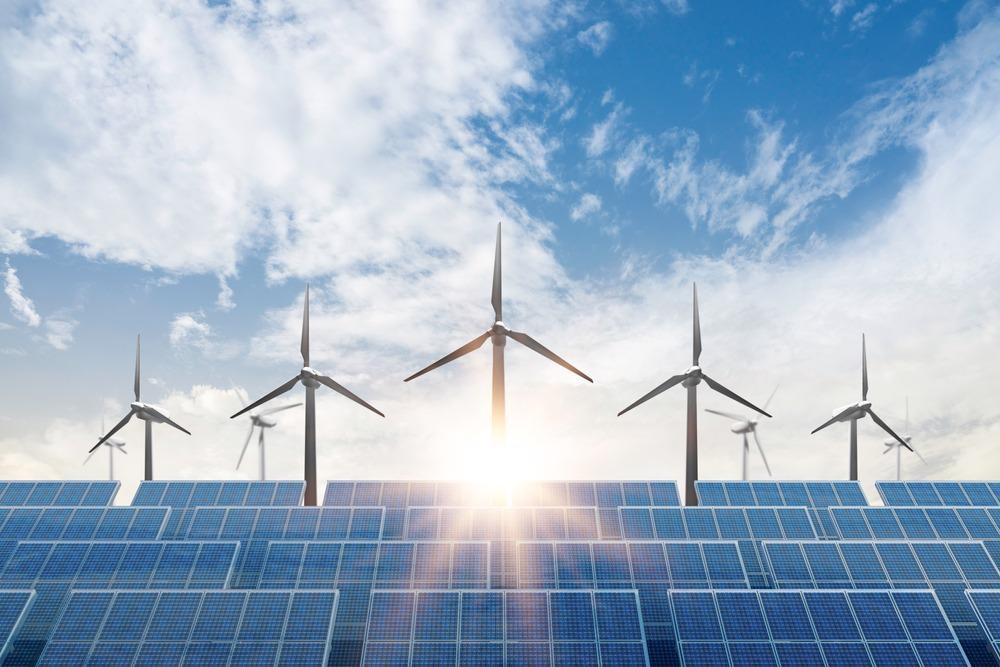Nanotechnology is a relatively new field, and according to many researchers, the ever-increasing demand for more efficient and sustainable energy sources worldwide can be met by using it. An important aspect of this field is its use as an energy storage device in the form of nanosensors.

Image Credit: Fit Ztudio/Shutterstock.com
Year by year, modifications and improvements in their capability of storing energy has been increased manifold, and in return, they are producing unimaginable effects in every field, especially in the electromechanical sector.
Here the formation of nanowires, their enhancement of energy storage capabilities, and applications in the modern industry have been highlighted.
Nanowires and Their Use as Nanosensors
Nanowires (NWs) are metallic (or semiconducting) particle strips with a high aspect ratio and a cross-sectional diameter of less than 1 micrometer. They have been investigated as photoelectrodes to convert solar energy to useable electrical energy as they ensure the collection of carriers rapidly generated through the whole device.
Growth and Characterization of ZnO Nanowires
A number of methods are used to obtain Zinc-oxide nanostructured arrays, including different chemical and physical processor. Some of these methods involve metalorganic growth. There are also electrochemical deposition techniques that have been newly introduced to increase the capability of ZnO for storing energy by altering its core properties. Some of the most used and efficient methods are discussed below:
Chemical Vapor Deposition
Through research, it has been reported that Zinc-oxide nanowires can be conventionally grown in a furnace through chemical vapor deposition, which uses gold as the catalyst.
ZnO is to be found highly dependent on the growth temperature. They are to be synthesized and characterized as graphene nanostructures comprising large graphene layers and nanostructures made up of ZnO using the chemical vapor deposition fabrication technique.
The nanowires obtained generally have good crystalline quality through chemical vapor deposition, and the graphene layers present enhanced growth of a dense array of Zinc-oxide nanostructures.
Zinc-Oxide Nanowires and Li Doping
ZnO nanowires (NWs) have their physical, material, piezoelectric, and electromechanical properties increased by lithium doping. The modification can be done on the atomic level through Atomic Force Microscope utilization by applying controlled force doping on ZnO NWs. The effect has been studied and found to increase the above-mentioned properties manifold through this alteration.
This dramatic increase in properties has led to a phenomenal revolution in the electronics industry. Now, on a single microprocessor, millions of transistors can be fitted, increasing the processing speed massively. Therefore, piezoelectric performance increase in nanowires has improved their application as the nano energy storage/harvesting element after the impact of Li dopants on them.
To study this doping effect of Li on the Zinc-oxide nanowires, Chao et al (2010) fabricated nanowire devices that were doped with Li and an un-doped one as well with variation in concentration of Li on them by use of conventional hydrothermal growth. Different simulations were performed on the devices, and characterization was performed on materials, piezoelectric and physical aspects to study the change in output of the nanowires.
The greater was the Li concentration on NWs, the shorter length was to be obtained of these wires under the same growth conditions.
Application
The study of nanostructures is one of the main research areas in recent times, and their applications are the solution to many-core industrial problems. There are several applications of sensors based on nanotechnology:
Extremely thin absorber solar cells based on the zinc-oxide nanowires have been realized, and they are easily constructed using the solution deposition and electrochemical techniques. For solar cell applications, Zinc-oxide nanotube and nanorods arrays are used, as cadmium selenide nanoparticles are to be assembled on these nanotubes/rods. Due to the enhancement in photocurrent density, an increase of 8% has been observed in the solar cells, which are based on nanotubes or nanorods.
Dye-Sensitized Solar Cells (DSSC) is a future candidate as a renewable energy device. There have been several attempts of DSSC by using zinc-oxide in it due to its low cost and high efficiency.
To be used as energy storing devices in further industrial sectors, the stability and quality of ZnO nanowires are being improved continuously. In addition, efforts are being made to optimize the technique of creating solar cells containing these nanowires for more sustainable energy sources. Hence, it will potentially outperform all available sustainable energy sources in the future.
Continue reading: Polymer Nanomaterials in Flexible Electronics: An Overview.
References and Further Reading
H.M.A. Hamid, Z. Ç.-B. (2018) Characterization and performance analysis of Li-doped ZnO nanowire as a nanosensor and nano-energy harvesting element. Nano energy, 159-168. Available at: https://www.sciencedirect.com/science/article/pii/S2211285518303392
L.ChenY., C. Y. (2010) Growth and characterization of type-II ZnO/ZnTe core-shell nanowire arrays for solar cell application. Superlattices and Microstructures, 160-164. Available at: http://dx.doi.org/10.1016/j.spmi.2009.07.005
LinJ.PenchevM.WangG. (2010) Heterogeneous Graphene Nanostructures: ZnO Nanostructures Grown on Large-Area Graphene Layers. Small, 2448-2452. Available at: https://doi.org/10.1002/smll.201000250
Qin, Q. P. (2011). ZnO Nanowires and Their Application for Solar Cells, IntechOpen, Available at: https://www.intechopen.com/chapters/16351
Disclaimer: The views expressed here are those of the author expressed in their private capacity and do not necessarily represent the views of AZoM.com Limited T/A AZoNetwork the owner and operator of this website. This disclaimer forms part of the Terms and conditions of use of this website.